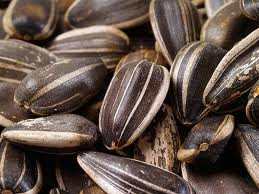It’s September, and Colorado gardeners are busy harvesting their vegetables and enjoying the last blooms of summer. Before all the fall gardening chores kick in, here are some simple September tasks to tackle.
Store Seeds
In Colorado, all vegetable and flower seeds will store on a shelf at room temperature for at least one year without significant loss of germination. The most important factors in determining how long seed can be stored are seed moisture and storage temperature. The drier the seeds are, the longer they will store. Drying seeds in the shade is better than in direct sunlight. Never use a microwave oven to dry seeds. You may use a conventional oven if you keep the door open and the seed is not heated to more than 100 degrees. Package the seed in moisture-proof containers and store it in a refrigerator or deep freezer. Use sealed cans or jars rather than plastic bags.
Harvest lavender stems in the morning when the oils are the most concentrated and at least 50% of the flowers are opened. Use pruning shears to cut the lavender stems as long as possible. Form bundles of 50 to 100 stems and secure them with rubber bands (they will contract as the stems dry out). Dry the harvested lavender in a cool, dark place where there is good air circulation.
Harvest and roast sunflower seeds! Sunflowers are mature when the back of the head turns yellow and the seeds take on a brownish tinge. If birds begin to pick at the heads before they are mature enough to cut, tie a perforated plastic bag over the head. Pick the heads and hang them upside-down in a warm, dry place. When the head is dry, the seeds separate easily. Be sure the seeds are fully dried before putting them in air-tight containers for storage.
Sunflower seeds can be roasted by heating in a 300° oven for 15 -25 minutes. If salting is desired, soak seeds overnight in a brine of 2 Tbsp salt to 1 cup water. Boil the brine mix for a few minutes and drain. Spread seeds thinly on a cookie sheet and roast in a 200° oven for 3 hours or until crisp. Enjoy! (Source: Planttalk Colorado #1828).
Start a gardening journal. Use it to record what worked this summer, what you want to change, new plants you’d like to try…anything that is fresh on your mind at the end of the gardening season. Be specific rather than general: for example, “eliminate Primrose and Valerian in front garden” will be more helpful than “get rid of invasive plants.” If you are like many of us, those details get lost in the hustle-bustle of the holidays and the long, cold days of winter. In the springtime, your journal will be a bridge between fall and spring, and will help you jump start the new gardening season.
















No comments:
Post a Comment